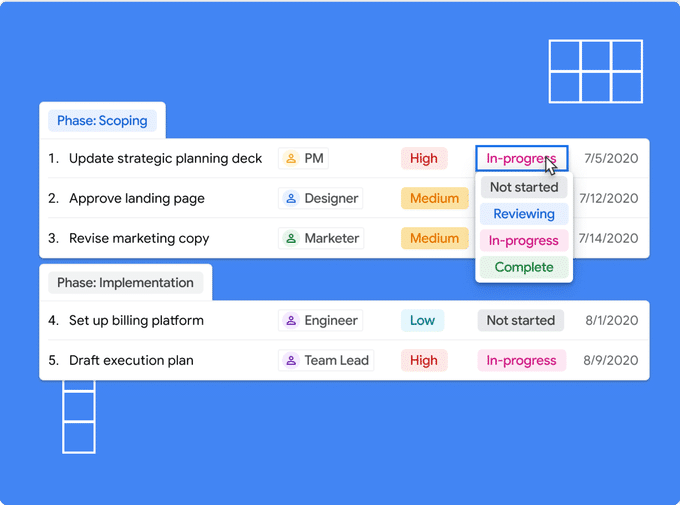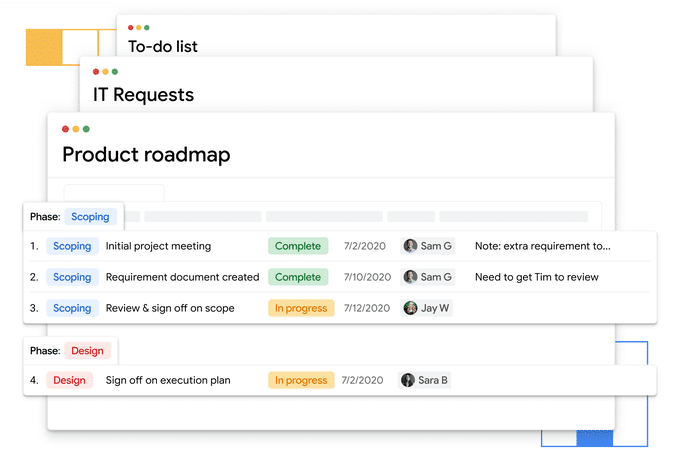This is the latest in Localogy’s Skate To Where the Puck is Going series. Running semi-weekly, it examines the moves and motivations of tech giants as leading indicators for where markets are moving. Check out the entire series here, and its origin here.
One core area that Localogy closely tracks is SaaS tools that help SMBs run their businesses. Though the local commerce discussion often happens around advertising and marketing, there’s a wealth of opportunity and activity around SMBs operational needs — everything from CRM to payroll.
An important branch of this “SMB Saas” world is productivity tools. The category includes software such as Asana, Trello and even to-do lists and project tracking in Slack. The idea is for SMBs to improve their workflows with dedicated tools, instead of just spreadsheets… or sometimes even pen and paper.
Google last week joined the competitive fray for project management software with its new product Tables. A product of its Area 120 incubator and innovation lab, Tables is an AI-fueled project management tool that organizes tasks on a series of cards and list views that track key parameters.
For example, like many project management tools, project owners can launch cards that contain action items, due dates and assigned team members. The stated use cases include project management, IT operations (think: support tickets), customer tracking and product development.
“I’ve been in the technology industry for a long time, including 10 years at Google,” Tables’ GM Tim Gleason said in an announcement. “And during my years in the workforce, I’ve always had a difficult time tracking project. Our teams stored notes and related tasks in different documents. Those documents always got out of date. We’d have to manually sync data between them. And I’d spend a lot of time coordinating between team members to prioritize and update statuses. I spent more time keeping track of work than actually working.”

We mentioned above that Tables is an AI-fueled tool. This involves bots that execute automated functions, to save time for SMBs or project teams. For example, they can send email reminders when tasks are overdue, or move tasks to other team members’ work queues when statuses or roles change.
Another advantage that Tables boasts is that it’s a Google product and therefore natively integrated with well-worn productivity tools. In other words, the natural integrations with Gsuite programs (Google Docs) could make Tables a natural add-on and assist in its adoption.
For example, Google makes it easy to pre-populate Tables by importing Google Sheets, where many project teams already have data. And in the project management flow, Tables integrates with Google Contacts so it’s easy to assign project tasks or ownerships to colleagues.
Tables is hoping all of the above makes it attractive enough for SMBs to pay for it. This makes it a bit of an outlier for a Google product, which are usually free (loss leaders to get more people into the Google ecosystem). There’s a free tier with usage caps, then paid plans starting at $10 per month.
Ahead of its launch, Google says that it has tested Tables with thousands of users. The product is available now in the U.S., and we’ll circle back with updates after we’re able to try it on for size.



